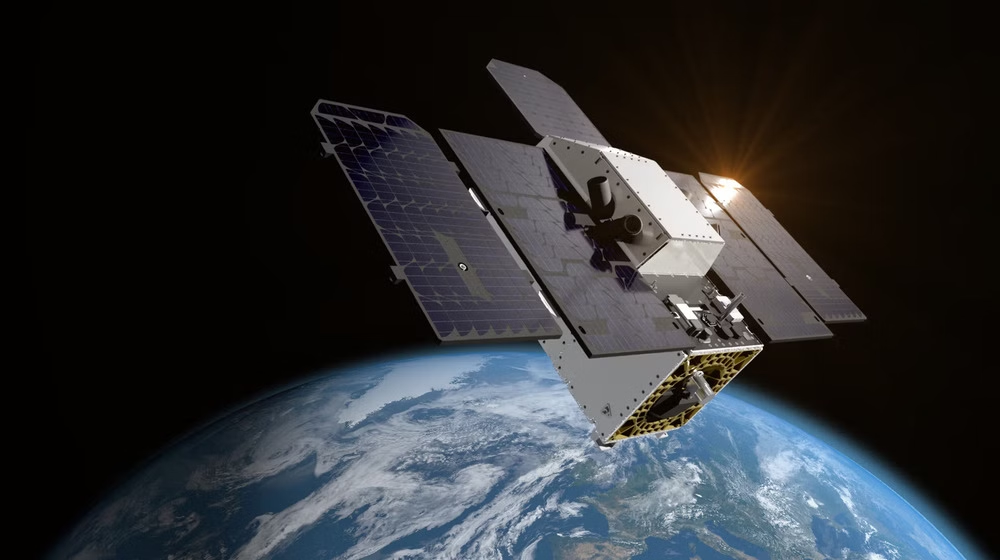Pakistan is gearing up for a major breakthrough in space technology as the Space and Upper Atmosphere Research Commission (SUPARCO) prepares to launch the country’s first Hyperspectral Satellite (HS-1) from the Jiuquan Satellite Launch Center (JSLC) in China on October 19, 2025. The Pakistan Hyperspectral Satellite HS-1 will mark a historic step forward in the nation’s space program, promising significant advancements in agriculture, urban planning, disaster management, and environmental monitoring.
Pakistan Hyperspectral Satellite HS-1: Transforming Precision Agriculture
The Pakistan Hyperspectral Satellite HS-1 is set to revolutionize the agriculture sector through precision farming. By using hyperspectral imaging, HS-1 will capture high-resolution data that helps monitor crop health, soil composition, and irrigation efficiency. The satellite’s sensors will analyze specific wavelengths of light reflected by crops, providing detailed information about their condition and nutrient levels.
According to SUPARCO, the use of hyperspectral data can improve yield estimation accuracy by 15 to 20%, enabling farmers to make better decisions about fertilizer use, pest control, and water management. This advancement is especially crucial for a country like Pakistan, where agriculture contributes nearly 19% of the GDP and employs around 37% of the labor force. The Pakistan Hyperspectral Satellite HS-1 will thus play a vital role in improving food security and promoting sustainable agricultural practices across the country.
Boosting Urban Development and Smart City Planning
Beyond agriculture, the Pakistan Hyperspectral Satellite HS-1 will have a major impact on urban development and infrastructure monitoring. The satellite’s advanced sensors will detect and record the spectral signatures of various materials and structures on the ground, helping authorities track urban expansion, assess land use, and monitor environmental changes in cities.
This data will assist urban planners in making evidence-based decisions to support sustainable development, optimize resource allocation, and enhance climate resilience. With Pakistan’s urban population projected to surpass 50% by 2030, the insights from HS-1 will be critical in designing smarter, greener cities.
Enhancing Environmental Monitoring and Disaster Response
The Pakistan Hyperspectral Satellite HS-1 is designed to serve as a key tool in environmental protection and disaster management. Its hyperspectral imaging capabilities will allow for real-time monitoring of deforestation, water pollution, land degradation, and other ecological challenges.
In disaster-prone regions, HS-1 will aid in early warning and rapid response by providing high-precision data on flood risks, landslides, earthquakes, and glacial melting. SUPARCO officials have highlighted that the satellite will be particularly useful in monitoring the Karakoram Highway and northern mountainous regions, where geo-hazards often threaten infrastructure and communities.
By integrating satellite data into national disaster management systems, Pakistan will be able to respond more effectively and minimize loss of life and property during natural calamities.
Integration with Pakistan’s Expanding Space Fleet
The launch of the Pakistan Hyperspectral Satellite HS-1 represents a major addition to SUPARCO’s growing fleet of remote sensing satellites. It follows the successful deployment of PRSS-1 in 2018, EO-1 in January 2025, and KS-1 in July 2025. Together, these satellites form a comprehensive space-based observation network that supports national development, environmental management, and security operations.
The HS-1 satellite will enhance this system by providing multi-spectral and hyperspectral imaging, offering far more detailed insights than conventional Earth observation satellites. Its data will also be shared with academic institutions, research organizations, and government departments to promote scientific innovation and cross-sector collaboration.
A Leap Toward Technological Self-Reliance
The Pakistan Hyperspectral Satellite HS-1 underscores SUPARCO’s commitment to advancing local expertise in satellite design, data analytics, and space-based applications. Over the years, Pakistan has made steady progress in space technology, and this launch will further solidify its position as a developing nation with growing scientific capability.
Moreover, the project reflects Pakistan’s strategic cooperation with China, a long-standing partner in space and defense technology. The collaboration between SUPARCO and the China National Space Administration (CNSA) demonstrates a shared commitment to peaceful use of space and technological innovation for mutual benefit.
Future Prospects of Pakistan Hyperspectral Satellite HS-1
Experts believe that the Pakistan Hyperspectral Satellite HS-1 will open new avenues for research, education, and industry. It will provide valuable data for sectors such as mining, forestry, climate research, and hydrology, while supporting policy development in sustainability, resource management, and energy planning.
With hyperspectral imaging becoming a global standard in Earth observation, Pakistan’s entry into this domain places it among the few countries capable of leveraging such advanced satellite technology. According to the latest reports, global demand for hyperspectral imaging is projected to grow by 15% annually, driven by applications in agriculture, defense, and environmental sciences.
The launch of the Pakistan Hyperspectral Satellite HS-1 on October 19, 2025, is a monumental step toward digital transformation, scientific innovation, and national resilience. From improving food security to aiding disaster response, HS-1 represents Pakistan’s ambition to harness space technology for sustainable growth and national progress. As SUPARCO continues to expand its satellite program, Pakistan moves closer to becoming a space-capable nation equipped to tackle future challenges through technology, data, and innovation.



